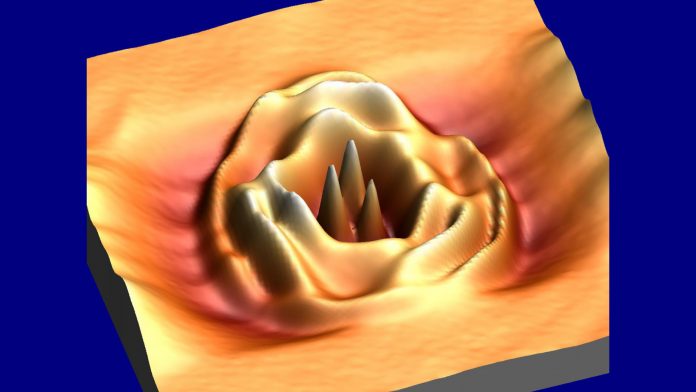Researchers led by the University California, Santa Cruz, USA, have achieved the first visualisation of quantum dots in bilayer graphene, revealing the shape of the quantum wave function of the trapped electrons.
Trapping and controlling electrons in bilayer graphene quantum dots yields a promising platform for quantum information technologies. The results from this recent study, published in Nano Letters, provide important fundamental knowledge needed to develop quantum information technologies based on bilayer graphene quantum dots.
Corresponding author Jairo Velasco Jr, assistant professor of physics at UC Santa Cruz, said: “There has been a lot of work to develop this system for quantum information science, but we’ve been missing an understanding of what the electrons look like in these quantum dots.”
While conventional digital technologies encode information as either 0 or 1, a quantum bit, or qubit, can represent both states at the same time due to quantum superposition. In theory, technologies based on qubits will enable a massive increase in computing speed and capacity for certain types of calculations.
Bilayer graphene (two layers of graphene, which is a two-dimensional arrangement of carbon atoms in a honeycomb lattice) is an attractive platforms for creating and manipulating qubits because it is easy to produce and work with, and quantum dots in bilayer graphene have desirable properties.
“These quantum dots are an emergent and promising platform for quantum information technology because of their suppressed spin decoherence, controllable quantum degrees of freedom, and tunability with external control voltages,” Velasco said.
Velasco’s team used a method he had developed previously to create quantum dots in monolayer graphene using a scanning tunnelling microscope (STM). With the graphene resting on an insulating hexagonal boron nitride crystal, a large voltage applied with the STM tip creates charges in the boron nitride that serve to electrostatically confine electrons in the bilayer graphene.
The researchers then used the STM to image the electronic states inside and outside of the corral. In contrast to theoretical predictions, the resulting images showed a broken rotational symmetry, with three peaks instead of the expected concentric rings.
Velasco said: “We see circularly symmetric rings in monolayer graphene, but in bilayer graphene the quantum dot states have a three-fold symmetry. The peaks represent sites of high amplitude in the wave function. Electrons have a dual wave-particle nature, and we are visualising the wave properties of the electron in the quantum dot.
“It is advancing the fundamental understanding of the system and its potential for quantum information technologies. It’s a missing piece of the puzzle, and taken together with the work of others, I think we’re moving toward making this a useful system.”









